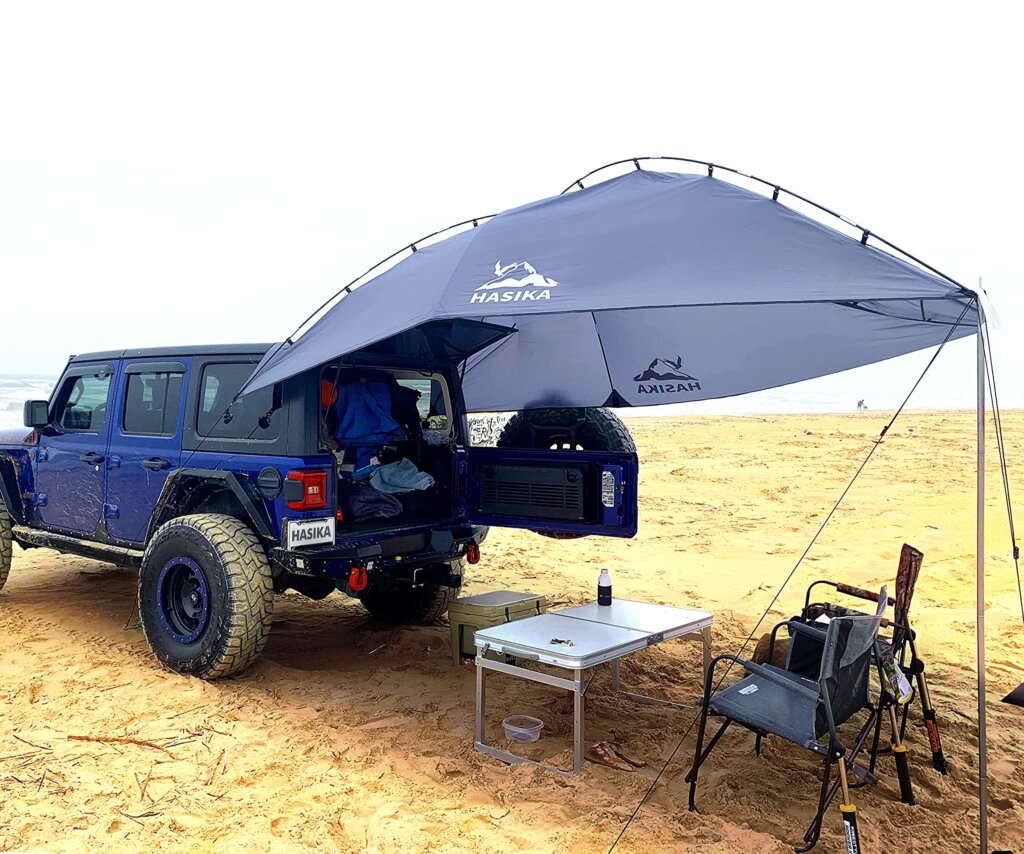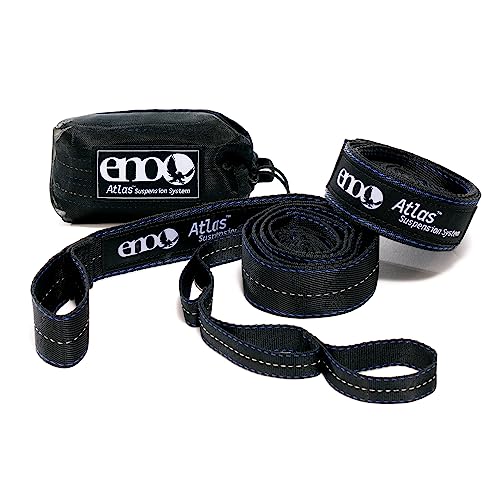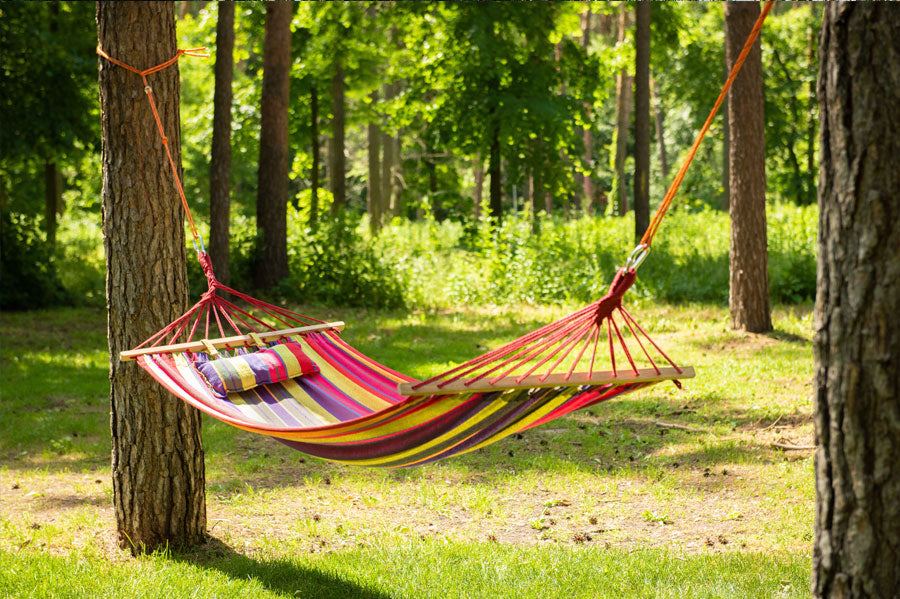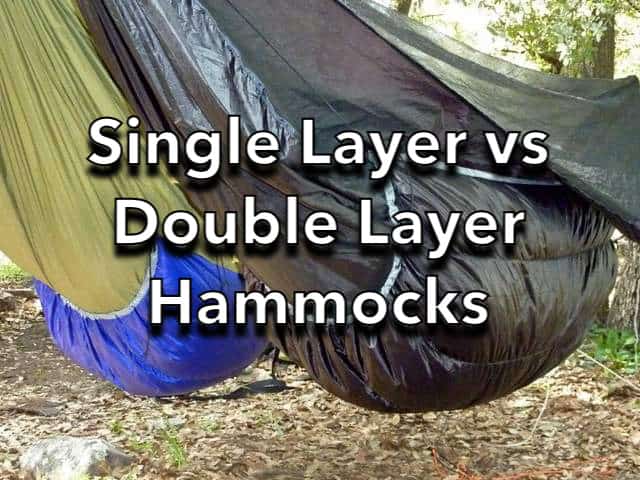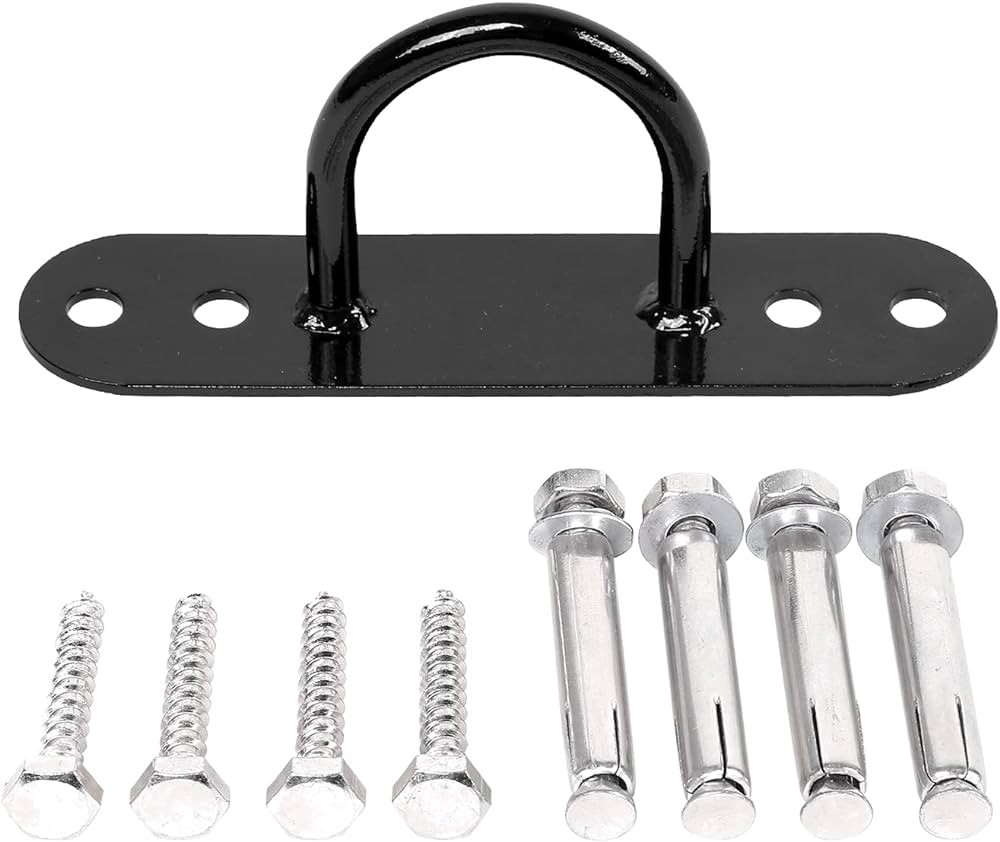- 8 Airplane Footrest Hammock!Travel comfortably - October 9, 2023
- top 7 Pool Float Water Hammock for a Relaxing Summer - October 9, 2023
- top 5 Space SaverSingle Hammock Stand Maximize Comfort and Space - October 9, 2023
Yes, you can use a tarp as a hammock. It is a cost-effective option for camping or relaxing outdoors, especially in dry weather conditions.
Tarp hammocks are easy to set up and can provide a comfortable and secure place to rest. However, it is important to ensure that your tarp is sturdy and properly secured to prevent any accidents or discomfort. Additionally, make sure to choose a tarp that is large enough to accommodate your body weight and offers adequate support.
With the right precautions and setup, a tarp can serve as a practical alternative to a traditional hammock.
Choosing The Right Tarp For Your Hammock Setup
When it comes to hammock camping, having a reliable tarp is crucial for protecting yourself from the elements. A tarp not only provides shelter from rain and wind but also adds an extra layer of insulation. However, not all tarps are created equal, and choosing the right one for your hammock setup is essential for a successful camping experience. In this article, we will explore the factors to consider when selecting a tarp for a hammock, the different types of tarps suitable for hammock camping, and the importance of size and weight in tarp selection.
Factors To Consider When Selecting A Tarp For A Hammock
When choosing a tarp for your hammock setup, there are several factors to consider. These factors will not only affect the performance of your tarp but also the overall camping experience. Some of the key factors to keep in mind include:
- Durability: Look for a tarp made from high-quality materials that can withstand rough weather conditions. Tarps made from ripstop nylon or polyester are known for their durability.
- Waterproofness: Ensure that the tarp is waterproof to protect you from rain and moisture. Look for tarps with a hydrostatic rating of at least 1500mm to ensure effective water resistance.
- Size: Consider the size of your hammock and the coverage you require. A tarp that is too small may not provide adequate protection, while a tarp that is too large may become cumbersome to set up and carry.
- Weight: If you are planning to go on long hikes or backpacking trips, weight becomes a crucial factor. Look for lightweight tarps that can be easily packed and carried without adding too much weight to your gear.
- Setup: Consider the ease of setup and adjustability of the tarp. Look for tarps with multiple tie-out points and attachment options, allowing you to customize the setup according to your needs and the surrounding environment.
Different Types Of Tarps Suitable For Hammock Camping
There are various types of tarps available that are suitable for hammock camping. Here are some popular options:
| Type | Description |
|---|---|
| Hex Tarp | A hexagon-shaped tarp that provides ample coverage and is easy to set up. It offers good protection from rain and wind. |
| Catenary Cut Tarp | A tarp with curved edges that helps reduce flapping and improves stability in windy conditions. It offers an efficient design for lightweight backpacking. |
| Diamond Tarp | A tarp with a diamond shape that provides excellent coverage while maintaining a compact size. It is versatile and suitable for various camping environments. |
Importance Of Size And Weight In Tarp Selection
When selecting a tarp for your hammock setup, size and weight play a crucial role. A tarp that is too small may not provide adequate coverage, leaving you vulnerable to rain and wind. On the other hand, a tarp that is too large may become heavy and bulky, making it challenging to carry and set up. Finding the right balance between size and weight ensures that you have a tarp that provides sufficient protection while still being lightweight and portable.
Additionally, the weight of the tarp becomes especially important if you plan on going on long hikes or backpacking trips. Every ounce counts when carrying your gear, and opting for a lightweight tarp will help reduce the overall burden on your back.
Consider these factors carefully when choosing the right tarp for your hammock setup. By selecting a tarp that meets your specific needs and preferences, you can ensure a comfortable and protected camping experience.
How To Pitch A Tarp For Hammock Camping
When it comes to hammock camping, using a tarp can provide you with the much-needed protection from the elements. It not only keeps you dry during unexpected rain showers but also shields you from the scorching sun or chilly wind. However, pitching a tarp for hammock camping requires proper technique and knowledge to ensure optimal coverage and protection.
Step-by-step Guide On Setting Up A Tarp For Hammock Camping
- Start by finding two suitable anchor points, such as trees, that are approximately 10-12 feet apart to set up your hammock. Ensure these anchor points are sturdy enough to support your weight.
- Lay out your tarp on the ground, ensuring it is positioned parallel to the anchor points.
- Secure one end of the tarp to one anchor point using a tarp ridgeline or a strong rope. This will serve as the ridge line for your tarp.
- Stretch the tarp tightly between the two anchor points, ensuring it is centered above your hammock.
- Secure the other end of the tarp to the second anchor point using another tarp ridgeline or rope.
- Adjust the tension of the tarp by tightening or loosening the ridgeline ropes as needed to achieve the desired coverage and protection.
Best Practices For Securing The Tarp To The Hammock And The Ground
Properly securing the tarp to your hammock and the ground is essential to ensure it stays in place and provides adequate protection. Here are some best practices:
- Attach the tarp to your hammock suspension system using carabiners or lightweight hooks. This will prevent the tarp from sliding down and protect you from rain or wind.
- Use guy lines or additional ropes to secure the corners of the tarp to the ground. This will provide extra stability and prevent the tarp from flapping in strong winds.
- Consider using adjustable tensioners or knots that are easy to adjust to ensure the tarp stays taut.
Tips For Achieving Optimal Coverage And Protection From The Elements
Getting optimal coverage and protection from the elements is crucial for a comfortable hammock camping experience. Here are some tips to help you achieve just that:
- Choose a tarp size that provides adequate coverage for your hammock and desired shelter area.
- Consider using a tarp with a catenary cut or a hexagonal shape, as these designs offer better coverage and minimize sagging.
- Ensure that the tarp is pitched with a slight slope to allow rainwater to run off and prevent puddling.
- Consider using a waterproofing spray or seam sealer to enhance the water resistance of your tarp.
- Regularly check and adjust the tension of the tarp’s ridgeline and guy lines to keep it taut and secure.
By following these step-by-step instructions and best practices, you can effectively pitch a tarp for hammock camping and enjoy a comfortable and protected outdoor experience. Remember to always prioritize safety and practice Leave No Trace principles when setting up your hammock and tarp in nature.
Creative Ways To Use A Tarp As A Hammock
A tarp is a versatile piece of camping equipment that can be used in various ways, and one creative use is as a hammock. While it may not be the conventional method, using a tarp as a hammock can offer a unique and lightweight camping experience. In this article, we will explore some creative setups and configurations, alternative suspension options, as well as the benefits and drawbacks of using a tarp as a hammock.
Unique Setups And Configurations Using A Tarp As A Hammock
If you’re looking for an unconventional hammock setup, using a tarp can offer some interesting possibilities. Here are a few unique setups and configurations:
- Double-layered tarp hammock: By folding the tarp in half and securing the edges, you can create a double-layered tarp hammock. This setup offers extra insulation and protection from the elements.
- Bridge hammock with a tarp: Bridge hammocks provide a flatter sleeping surface and can be combined with a tarp for increased rain protection. Attach the tarp above the bridge hammock using a ridgeline for a secure shelter.
Exploring Alternative Suspension Options For Tarp Hammocks
When it comes to suspending your tarp hammock, there are alternative options that you can consider:
- Tree straps: Instead of using ropes, use tree straps to suspend the tarp hammock. Tree straps are wider, distribute weight evenly, and minimize damage to trees.
- Adjustable hardware: Using adjustable hardware, such as carabiners or buckles, allows for easy adjustment and fine-tuning of the tarp hammock’s suspension.
Benefits And Drawbacks Of Using A Tarp As A Hammock
Using a tarp as a hammock can have its advantages and disadvantages. Here are some benefits and drawbacks to consider:
| Benefits | Drawbacks |
|---|---|
|
|
While using a tarp as a hammock may not be for everyone, it offers a lightweight and versatile camping option for those seeking a unique outdoor experience. With the right setup and suspension, you can enjoy the benefits of a tarp hammock while embracing the challenges it presents. Experiment, practice, and find the setup that works best for you!
Enhancing Your Tarp Hammock Setup
Accessories And Gear To Enhance Your Tarp Hammock Experience
When it comes to using a tarp as a hammock, there are several accessories and gear options that can greatly improve your overall experience. These items not only enhance comfort and insulation but also provide protection from the elements.
Here are some essential accessories and gear to consider:
- Mosquito Net: Keep pesky bugs and insects at bay with a mosquito net specifically designed for hammocks. This accessory is particularly important if you plan on camping in areas with high mosquito activity.
- Underquilt: Enhance insulation and warmth with an underquilt. This gear hangs beneath your hammock to provide additional insulation, ensuring you stay cozy even in colder temperatures.
- Top Quilt: For added comfort and warmth, consider investing in a top quilt. This insulated blanket can replace your traditional sleeping bag and is designed to fit snugly over your hammock.
- Tree Straps: Opt for tree straps instead of ropes to secure your hammock. These straps are wider and help protect the tree bark from damage while also providing a stronger hold.
- Carabiners or Hooks: Use carabiners or hooks to easily attach and detach your tarp to the hammock. This allows for quick setup and dismantling.
Tips For Improving Comfort And Insulation In Tarp Hammocks
Improving comfort and insulation is essential for a pleasant tarp hammock experience. By following these tips, you can make your sleeping setup comfier and warmer:
- Add a Foam Pad: Place a foam pad or sleeping mat underneath your hammock for added cushioning and insulation.
- Adjust the Ridgeline: Ensure your hammock’s ridgeline is properly adjusted to provide a flatter, more comfortable sleeping position.
- Choose the Right Suspension System: Opt for a suspension system that allows for easy adjustability, so you can find the perfect tension and height.
- Position the Underquilt Correctly: Ensure that your underquilt is properly positioned and covers the entire length of your hammock to maximize insulation.
- Utilize Clothing Layers: Layering your clothing can help trap heat and keep you warm throughout the night. Consider wearing thermal clothing or adding extra layers if needed.
Recommended Techniques For Staying Dry And Comfortable In Various Weather Conditions
Weather conditions can greatly affect your comfort and overall experience when using a tarp hammock. Here are some techniques to stay dry and comfortable in different weather scenarios:
- Rainy Conditions: Ensure that your tarp is properly pitched with enough coverage to keep you dry. Use additional gear like rainflys or tarps to create a multi-layered shelter.
- Hot Weather: Opt for a tarp with mesh panels or venting options to improve airflow and prevent overheating. Consider adding a lightweight bug net for protection against insects.
- Cold Weather: Use insulating gear like underquilts, top quilts, and sleeping pads to stay warm. Create a windbreak by positioning your tarp to block cold drafts.
- High Wind Conditions: Choose a tarp with sturdy tie-outs and proper reinforcements to withstand strong gusts. Utilize additional guylines or anchors to secure your setup.
Exploring The Possibilities Of Tarp Hammock Camping
Using a tarp as a hammock may seem unconventional at first, but in recent years, it has gained popularity among outdoor enthusiasts. Tarp hammock camping offers a unique and versatile alternative to traditional camping setups. Not only does it provide a lightweight and compact camping option, but it also allows for more flexibility in different environments and terrains. In this article, we will explore the innovative uses for tarp hammocks beyond traditional camping, provide essential tips for tarp hammock camping in different environments, and share stories and experiences from seasoned tarp hammock campers.
Innovative Uses For Tarp Hammocks Beyond Traditional Camping
Tarp hammocks are not limited to traditional camping setups. They offer a range of innovative uses that make them a valuable tool for outdoor enthusiasts. Here are some creative ways you can utilize a tarp hammock:
- Emergency shelter: A tarp hammock can double as a makeshift emergency shelter in unexpected situations. Whether you’re caught in a sudden downpour or need protection from the sun, a tarp hammock can provide immediate coverage.
- Beach shade: When you’re enjoying a day at the beach, a tarp hammock can serve as a shady spot to relax and shield yourself from the scorching sun.
- Picnic blanket: Spread out your tarp hammock for a comfortable spot to have a picnic. Its waterproof nature will protect you from damp ground and allow for easy cleanup.
- Outdoor yoga mat: Take your yoga practice to the great outdoors with a tarp hammock. Its durable material provides a stable surface for yoga poses while connecting you with nature.
- Backyard hammock: Instead of investing in a traditional hammock and stand, use a tarp hammock to create a cozy relaxation spot in your own backyard. Set it up between two sturdy trees and enjoy the comfort of swinging and lounging.
Tarp Hammock Camping Tips For Different Environments And Terrains
When venturing into the wilderness with a tarp hammock, it’s essential to consider the specific environment and terrain you’ll encounter. Here are some expert tips to ensure a successful tarp hammock camping experience:
- Choose the right tarp: Select a tarp that suits the climate and conditions you anticipate. Look for a tarp with a durable material such as nylon or polyester that offers both waterproof and UV-resistant properties.
- Pick the ideal setup location: Before setting up your tarp hammock, survey the area for potential risks such as falling branches, uneven ground, or steep slopes. Finding a suitable location will ensure a safe and comfortable camping experience.
- Consider bug protection: Insect netting or a bug bivy can be a valuable addition to your tarp hammock setup, especially in areas with high mosquito populations. Stay protected from annoying bugs and ensure a peaceful night’s sleep.
- Secure your tarp: Use adjustable ridgelines and tie-outs to properly tension your tarp and prevent it from sagging or flapping in strong winds. This will ensure maximum protection from rain and wind while maintaining a stable setup.
- Practice different pitching techniques: Experiment with various pitching techniques such as the diamond, A-frame, or lean-to to find the most suitable setup for the terrain you’re camping in. Adapting your pitch to the surroundings will optimize protection and comfort.
Stories And Experiences From Seasoned Tarp Hammock Campers
Seasoned tarp hammock campers have a wealth of knowledge and experiences to share. Learning from their stories can help you avoid common pitfalls and discover new tips and tricks. Here are snippets from the experiences of some seasoned tarp hammock campers:
| Camper | Experience |
|---|---|
| David Canterbury | “I’ve found that using a tarp as a hammock allows for quick and easy setup, making it a great option for spontaneous camping trips.” |
| Adventures with the Marine | “Continuous ridgeline setups provide versatile options for adjusting the tarp tension, allowing for optimal protection in changing weather conditions.” |
| Black Hat Bushcraft | “Trying different pitching techniques has taught me the importance of adapting to the terrain. It’s amazing how a slight adjustment can significantly improve overall comfort.” |
By tapping into the wisdom of experienced tarp hammock campers, you can enhance your own tarp hammock camping skills and take full advantage of its versatility.

Credit: exploringwild.com
Frequently Asked Questions On Can You Use A Tarp As A Hammock
How Do You Set Up A Tarp For Hammocking?
To set up a tarp for hammocking, start by laying the tarp flat on the ground. Pull about two feet of one corner out and secure it to a tree or anchor point. Repeat this on the opposite corner. Adjust the tension of the tarp to create a good coverage.
Ensure the tarp is pitched at an angle to provide adequate protection from rain and wind.
Can I Just Use A Tarp As A Rain Fly For A Hammock?
Yes, you can use a tarp as a rain fly for a hammock. It provides protection from the rain and helps keep you dry.
How Big Of A Tarp Do You Need For A Hammock?
For a hammock, you will need a tarp that is large enough to cover both the hammock and yourself. It should be at least 9 feet long and 6 feet wide to provide adequate coverage and protection from rain or sun.
Can You Camp With A Tarp?
Yes, you can camp with a tarp. Flat tarps are great for hanging a ridgeline between trees in forests and are ideal for wild camping in warmer, drier climates. They are also a cost-effective option and suitable for beginners.
Can You Use A Tarp As A Hammock?
No, a tarp is not designed to support weight and provide comfort like a hammock.
How Do You Set Up A Tarp For Hammocking?
To set up a tarp for hammocking, you need to attach it to your hammock ridgeline using knots or hardware.
Conclusion
Using a tarp as a hammock can be a convenient solution for outdoor enthusiasts. It provides protection from the elements while offering a comfortable place to relax or sleep. By securing the tarp properly and using additional accessories, you can create a functional and DIY hammock.
Just make sure to choose a durable and waterproof tarp that is suitable for hammocking. With a little creativity and proper setup techniques, you can enjoy the benefits of a hammock using a tarp. Happy hammocking!

